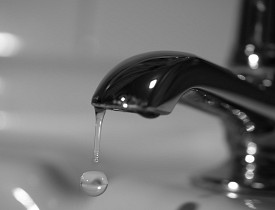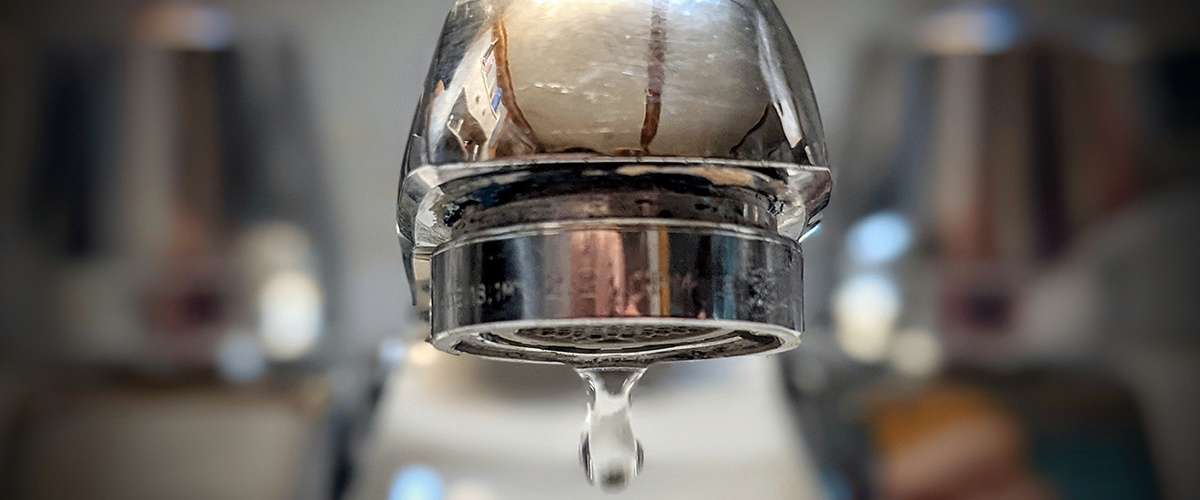The Significance of Addressing a Dripping Faucet
The Significance of Addressing a Dripping Faucet
Blog Article
Each person will have their unique theory with regards to Why It's Important to Fix Leaky Faucets.

Leaking taps might appear like a small hassle, however their effect goes beyond simply the aggravation of the noise. From wasting water to incurring unnecessary financial expenses and wellness risks, overlooking a leaking faucet can result in different consequences. In this write-up, we'll delve into why it's critical to address this typical home concern immediately and effectively.
Wastefulness of Water
Environmental Influence
Leaking faucets contribute significantly to water waste. According to the Epa (EPA), a single faucet trickling at one drip per second can squander greater than 3,000 gallons of water each year. This not only pressures water sources but also impacts ecological communities and wildlife dependent on them.
Financial Expenses
Boosted Water Expenses
Past the ecological influence, trickling taps can inflate water bills considerably. The built up wastefulness gradually converts into higher utility costs, which might have been stayed clear of with timely repairs.
Possible Building Damage
In addition, prolonged dripping can cause harm to components and surfaces surrounding the faucet. Water build-up can trigger discoloration, deterioration, and also architectural issues if left unattended, leading to extra repair service expenses.
Wellness Problems
Mold And Mildew and Mold Growth
The constant presence of dampness from a trickling tap develops an excellent setting for mold and mildew and mold growth. These fungi not only endanger indoor air high quality but additionally position wellness dangers, specifically for individuals with respiratory system problems or allergies.
Waterborne Illness
Stagnant water in dripping taps can end up being a breeding ground for microorganisms and other pathogens, raising the danger of waterborne conditions. Pollutants such as Legionella bacteria prosper in stagnant water, possibly resulting in significant diseases when consumed or inhaled.
DIY vs. Specialist Repair work
Pros and Cons of DIY Repair Service
While some might attempt to take care of a trickling tap themselves, do it yourself fixings come with their own set of difficulties. Without correct knowledge and tools, DIY attempts can intensify the problem or cause insufficient fixings, lengthening the problem.
Benefits of Hiring a Professional Plumber
Hiring a professional plumber guarantees that the underlying reason for the dripping tap is resolved properly. Plumbers have the experience and tools to identify and repair tap problems effectively, saving time and decreasing the danger of further damages.
Step-by-Step Guide to Fixing a Dripping Tap
Tools Called for
Before trying to take care of a dripping faucet, gather the necessary devices, consisting of an adjustable wrench, screwdrivers, substitute parts (such as washing machines or cartridges), and plumber's tape.
Common Tap Issues and Their Solutions
Identify the kind of tap and the specific problem creating the drip. Common troubles include damaged washing machines, corroded valve seats, or malfunctioning O-rings. Describe manufacturer directions or on-line tutorials for detailed support on fixings.
Safety nets
Routine Maintenance Tips
To prevent trickling taps, execute routine maintenance such as cleaning up aerators, evaluating for leakages, and changing damaged components promptly. Additionally, think about setting up water-saving devices or upgrading to more efficient components.
Importance of Prompt Services
Addressing trickling taps as soon as they're discovered prevents more water wastefulness and prospective damage, inevitably conserving both water and cash in the long run.
Impact on Residential Or Commercial Property Worth
Understanding of Well-Maintained Home
Maintaining a property in good condition, consisting of addressing upkeep issues like leaking taps, improves its perceived value and worth among prospective customers or renters.
Impact on Resale Worth
Residences with properly maintained plumbing fixtures, including taps, command greater resale values in the realty market. Attending to trickling faucets can contribute to a positive perception throughout building inspections and negotiations.
Environmental Obligation
Private Contribution to Preservation
Taking obligation for taking care of leaking taps lines up with wider efforts toward water conservation and ecological sustainability. Every person's activities collectively make a significant impact on maintaining valuable resources.
Sustainable Living Practices
By focusing on timely repair work and adopting water-saving behaviors, people contribute to lasting living methods that benefit both existing and future generations.
Final thought
Dealing with a trickling faucet goes beyond simple convenience; it's a vital action towards conserving water, reducing economic costs, and protecting health and wellness and residential property. Whether via DIY repair work or professional help, acting to fix leaking faucets is a tiny yet impactful method to advertise liable stewardship of resources and contribute to a healthier, extra sustainable future.
How to Fix a Leaky Faucet: Step-by-Step Repair Guide
A leaky faucet may seem like a simple annoyance, but if it's not fixed promptly, that leak could cost hundreds to potentially thousands. From water damage to mold, mildew, and high water bills, even a tiny leak can be catastrophic if left unattended. Damage like this can even affect the overall value of your home, so it's important to take the right approach for leaky faucet repair. You may need the help of a plumber in some cases, but we've got a few tips you can try on how to fix a leaky faucet before calling the pros.
Four Faucet Types
When you're learning how to fix a leaky faucet, the first step is knowing what kind of faucet you're working with! There are four common types.
Cartridge Faucets
Cartridge faucets come in one- or two-handled varieties. In one-handled cartridge faucets, hot and cold water combines in a single cartridge. In the two-handled versions, hot and cold water are controlled separately and mixed in the faucet.
Ball Faucets
Ball faucets have a single lever you push up and down to adjust the pressure and rotate to change the temperature. A slotted metal ball controls the amount of water allowed into the spout.
Compression Washer Faucets
They're the oldest type of faucet, but they're still used in many homes — especially older ones. Compression faucets have two separate handles that, when turned, raise or lower the washer that seals a water valve. This valve stops water from flowing through the faucet when it is turned off.
Disc Faucets
Disc faucets rarely need to be repaired due to their maintenance-free design. The water flow is controlled by two discs — the upper one raises and lowers against a fixed lower disc, creating a watertight seal. If your disc faucet starts leaking, you may need to replace the seals or clean residue buildup from the inlets.
Fixing a Leaky Faucet
Step 1: Turn Off the Water
Whether you're learning how to fix a leaky bathtub faucet or how to fix a leaky kitchen faucet, always turn off the water supply to your working area when you're fixing a leak. The last thing you want is a flood added to your list of things to fix.
Look for the shutoff valves below your sink or around the tub and turn them clockwise to stop the water flow. If your faucet doesn't have shutoff valves, you may need to turn off the water for the whole house. Check to make sure it's off by turning the faucet on. If nothing comes out, you're ready to start the repair.
Step 2: Take Apart the Faucet
How you disassemble your faucet depends on the type of fixture you have. You can use a flathead screwdriver to remove the caps on top of the handle or handles for cartridge and compression faucets. Inside, you should see handle screws. Unscrew these with a screwdriver to remove the handle.
Disc- and ball-style faucets will typically have an inlet screw near the handle, and removing that will reveal the interior of the faucet.
Detach the Valve Stem
For cartridge- and compression-style faucets, you'll see the inner valve stem or cartridge once you remove the faucet handles. If you have a compression faucet, unscrew the brass valve stem. If you have a cartridge faucet, pull out the cartridge. If your cartridge has been in place for a while, it may require some tools or extra force to remove it due to mineral deposits.
Examine and Replace Parts
Once you've removed the parts, check them out to confirm what needs to be replaced. You may see corroded rubber washers, O-rings, stems, or cartridges. On a ball-style faucet, check the seats and springs for damage.
If you need to repair a leaky disc faucet, check the inlet and seals on the lower disc.
Once you determine what parts must be replaced, visit your local hardware store. Bring the damaged parts with you to ensure you can purchase the correct components to replace them.
Clean Valves and Faucet Cavity
If you've removed a stem or cartridge, you may notice mineral buildup in the faucet's threads. Use white vinegar to clean the valve seat by soaking it for a few minutes, then scrub it away with a soft toothbrush and rinse with warm water. You can also clean the interior of the faucet in the same way.
Reassemble the Faucet
Once your faucet is cleaned and the required parts have been replaced, it's time to reassemble it. Put the pieces back together and slowly turn the water supply back on. Doing this slowly is crucial because too much initial water pressure can damage the new hardware you've just installed.
https://homewarranty.firstam.com/blog/how-to-fix-leaky-faucet

I hope you enjoyed reading our article about 4 Common Reasons for a Leaky Faucet. Thanks so much for spending some time to read through our short article. Feel free to set aside a second to share this article if you appreciated it. Thanks for being here. Kindly pay a visit to our site back soon.
Report this page